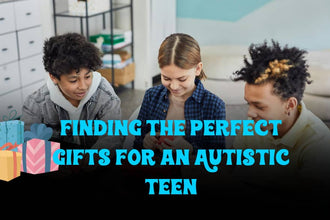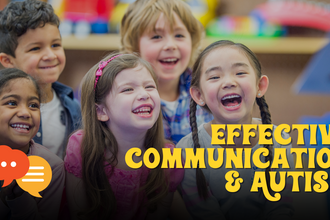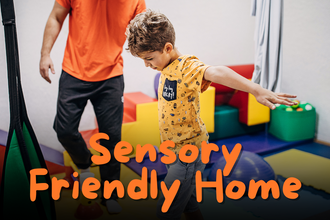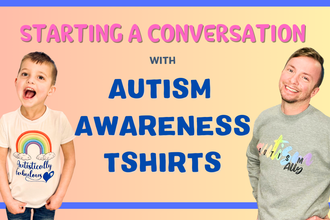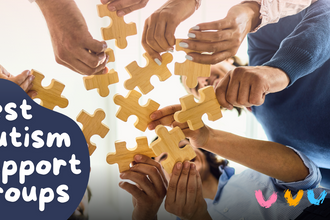
Understanding Autism
Autism Spectrum Disorder (ASD) encompasses a wide range of neurodevelopmental conditions characterized by differences in social interaction, communication, and behavior. It's essential to recognize that autism affects each individual uniquely, with varying strengths and challenges.
Sensory processing differences are common among individuals with autism, leading to heightened sensitivity or decreased responsiveness to sensory stimuli. These differences can profoundly impact how individuals experience and engage with the world around them.
The Role of Art in Autism
Art therapy offers a safe and non-verbal means of expression for individuals with autism, allowing them to communicate thoughts, feelings, and experiences that may be challenging to articulate verbally. Through artistic exploration, individuals can develop self-awareness, build confidence, and cultivate coping mechanisms for managing stress and anxiety. Moreover, art provides a platform for individuals with autism to showcase their unique perspectives and talents, fostering a sense of pride and accomplishment.

Art Therapy vs. Traditional Art Classes
While traditional art classes often focus on technique and aesthetic outcomes, art therapy prioritizes the therapeutic process. Trained art therapists facilitate sessions that emphasize self-discovery, emotional exploration, and personal growth.
Rather than aiming for a perfect finished product, the focus is on the journey of creation and the insights gained along the way. Art therapy interventions are tailored to meet the specific needs and preferences of each individual, ensuring a personalized and supportive experience.
Types of Art Beneficial for Autism
1. Painting and Drawing
These visual mediums provide individuals with autism a tangible outlet for self-expression. Experimenting with colors, shapes, and textures can be both calming and stimulating, allowing individuals to explore their creativity freely.

2. Sculpture
Working with three-dimensional materials such as clay or found objects engages the tactile senses and promotes sensory exploration. Sculpture offers individuals with autism a hands-on opportunity to express themselves while developing fine motor skills and spatial awareness.
3. Music
Music therapy harnesses the power of sound to support individuals with autism in various areas of development. Playing instruments, singing, or engaging in rhythmic activities can enhance auditory processing, improve communication skills, and foster emotional expression.

4. Dance
Movement-based therapies like dance provide individuals with autism a kinesthetic outlet for self-expression and social interaction. Through guided movement exercises and improvisational activities, individuals can develop body awareness, coordination, and interpersonal skills in a supportive environment.
How Art Therapy Works?
Art therapists employ a range of techniques and modalities to engage individuals in the therapeutic process. Sessions may involve structured activities, free-form expression, or collaborative projects depending on the goals and preferences of the participants.
Through guided reflection and discussion, art therapists help individuals explore the thoughts, emotions, and memories evoked by their artistic creations, promoting insight and self-awareness.
Benefits of Art Therapy for Individuals with Autism
The benefits of art therapy for individuals with autism are manifold and extend beyond artistic skill development. Art therapy can:
- Enhance Communication Skills: Art serves as a universal language that transcends verbal barriers, enabling individuals to communicate thoughts and feelings that may be difficult to express verbally.
- Promote Emotional Regulation: Engaging in creative expression can provide a healthy outlet for processing and regulating emotions, reducing stress, and promoting emotional well-being.
- Encourage Social Connection: Group art activities foster a sense of belonging and community, providing opportunities for collaboration, peer support, and shared creative experiences.
Implementing Art Therapy
Finding a qualified art therapist with experience working with individuals with autism is essential for ensuring the effectiveness and appropriateness of art therapy interventions. Additionally, incorporating art into everyday life at home and in educational settings can further support the therapeutic process.
Creating a sensory-friendly art environment, providing access to a variety of art materials, and encouraging exploration and self-expression can help individuals with autism reap the benefits of artistic engagement.
Art at Home and School
Parents and educators play a vital role in nurturing creativity and artistic expression in individuals with autism. Strategies for incorporating art into daily routines include:
- Establishing a designated art space equipped with a variety of materials and tools to facilitate exploration and experimentation.
- Encouraging open-ended artistic activities that prioritize process over product, allowing individuals to express themselves freely without fear of judgment or criticism.
- Using art as a tool for communication, self-regulation, and skill-building across various domains, including language development, social interaction, and sensory integration.

Key Takeaway
Art therapy can really help people with autism express themselves, make friends, and grow as a person. When they try different types of art, like painting or music, they can find new ways to show who they are. Let's celebrate the awesome talents of people with autism and how creativity can help them feel strong, confident, and understand themselves better.
Become a part of Prideful on the Spectrum's community today where we spread awareness about the diverse spectrum of abilities in autistic individuals. Explore our carefully crafted toys and a clothing line that aims to celebrate differences and challenge stereotypes. Come and join hands in bringing a change- Explore now!


